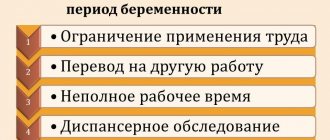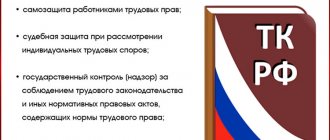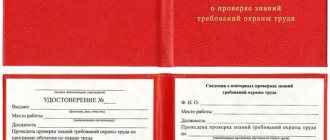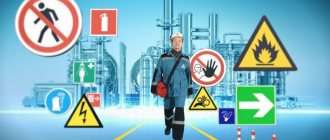What are safe working conditions and how to correctly interpret this term? People don’t often ask this question, since there are few reasons for its occurrence: someone may be interested in how safe the working conditions are at their workplace, someone is affected by the financial side or compensation, the third category may be looking for ways to resolve disputes with the employer, etc. etc. It doesn’t matter what reason brought the reader to this site - all the necessary information on this issue is collected here.
What are safe working conditions?
The official wording is as follows: “Safe working conditions are those in which the working personnel are not exposed to production risks or the level of exposure to production factors does not exceed established standards.”
Safe working conditions - what is it?
What does it mean? This wording means that the employee, in the course of his work activities, is guaranteed not to be exposed to the threat of physical injury or harm to health. As an example, consider the following situation. Typically, a workplace consists of a table, a chair (chair) and a computer (system unit, monitor, input/output devices). With proper space planning, as well as an acceptable level of radiation from operating equipment, no harm to health can be caused. But if there are bare wires in the room (from an extension cord or open wiring), then the fact that there is a threat to life or health is obvious. Regulatory authorities, when checking, have a legal basis for drawing up an act. An employee has the right to file a complaint against the employer. Dangerous conditions are considered to be any deviations from the prescribed standards.
Safety first. Employees are required to wear protective devices
Article 209. Basic concepts
Labor protection is a system for preserving the life and health of workers in the process of work, which includes legal, socio-economic, organizational, technical, sanitary and hygienic, treatment and preventive, rehabilitation and other measures.
Working conditions are a set of factors in the working environment and the labor process that affect the performance and health of the employee.
A harmful production factor is a production factor, the impact of which on an employee can lead to illness.
A hazardous production factor is a production factor, the impact of which on a worker can lead to injury.
Safe working conditions are working conditions under which workers are excluded from exposure to harmful and (or) hazardous production factors or their exposure levels do not exceed established standards.
Workplace is a place where an employee must be or where he needs to arrive in connection with his work and which is directly or indirectly under the control of the employer.
Personal and collective protective equipment for workers are technical means used to prevent or reduce the impact of harmful and (or) hazardous production factors on workers, as well as to protect against pollution.
Certificate of compliance with the organization of labor protection work is a document certifying the compliance of the employer’s labor protection work with state regulatory requirements for labor protection.
(as amended by Federal Law No. 90-FZ of June 30, 2006)
Production activity is a set of actions of workers using means of labor necessary to transform resources into finished products, including the production and processing of various types of raw materials, construction, and the provision of various types of services.
Labor protection requirements - state regulatory requirements for labor protection, including labor safety standards, as well as labor protection requirements established by labor protection rules and instructions.
(Part ten was introduced by Federal Law No. 90-FZ of June 30, 2006, as amended by Federal Law No. 206-FZ of July 24, 2009)
State examination of working conditions - assessment of the compliance of the object of examination with state regulatory requirements for labor protection.
(Part eleven was introduced by Federal Law No. 90-FZ of June 30, 2006)
Certification of workplaces according to working conditions - assessment of working conditions at workplaces in order to identify harmful and (or) dangerous production factors and implement measures to bring working conditions into compliance with state regulatory requirements for labor protection. Certification of workplaces based on working conditions is carried out in the manner established by the federal executive body exercising the functions of developing state policy and legal regulation in the field of labor.
(Part twelve was introduced by Federal Law No. 90-FZ of June 30, 2006)
Occupational safety standards are rules, procedures, criteria and standards aimed at preserving the life and health of workers in the process of work and regulating the implementation of socio-economic, organizational, sanitary and hygienic, treatment and preventive, rehabilitation measures in the field of labor protection.
(Part thirteen was introduced by Federal Law dated July 24, 2009 N 206-FZ)
Occupational risk is the likelihood of harm to health as a result of exposure to harmful and (or) hazardous production factors when an employee performs duties under an employment contract or in other cases established by this Code and other federal laws. The procedure for assessing the level of occupational risk is established by the federal executive body that carries out the functions of developing state policy and legal regulation in the field of labor, taking into account the opinion of the Russian Tripartite Commission for the Regulation of Social and Labor Relations.
(Part fourteen was introduced by Federal Law dated July 18, 2011 N 238-FZ)
Occupational risk management is a set of interrelated activities, including measures to identify, assess and reduce levels of occupational risks. The regulations on the occupational risk management system are approved by the federal executive body that carries out the functions of developing state policy and legal regulation in the field of labor, taking into account the opinion of the Russian Tripartite Commission for the Regulation of Social and Labor Relations.
(Part fifteen introduced by Federal Law dated July 18, 2011 N 238-FZ)
Organization of safe working conditions and employer responsibilities
Safe working conditions are one of the main responsibilities of an employer. The impact of operating devices is limited to the established level. The proper amount is specified in the standards. Maximum permissible EMF standards:
Labor protection: what is it, concept, definition
Electric field strength:
- range 5 Hz - 2 kHz, E1: 25 V/m;
- range 2 kHz - 400 kHz, E2: 2.5 V/m.
Magnetic Flux Density:
- range 5 Hz - 2 kHz, B1: 250 nT;
- range 2 kHz - 400 kHz, B2: 25 nT.
There is a legislative system that controls the protection of workers' health. This considers the significance of the level of risk to which an employee is exposed in the course of his activities.
Note! Occupational safety and health is classified according to the level of hazard that threatens the health of the worker.
To eliminate the likelihood of injury and illness, a number of measures must be taken. The level of health hazard is determined by expertise. The presence of any minimal deviations may mean for an entrepreneur or organization of proceedings with regulatory authorities. How can the definition of “harmless” be understood? The concept of “safety” excludes any, even the most insignificant, factors affecting the health of an employee.
Control over the state of workplaces is carried out by regulatory structures
In legal practice, there is a well-known case in which the performer’s workplace was under a direct flow of cold air created by the ventilation system. After receiving a request from a worker to change his workplace, management took no action, and the employee was hospitalized with a severe cold. As a result, the employee filed a lawsuit and demanded compensation, which he was able to receive after a short trial.
Note! Also, special attention should be paid to fire-fighting equipment. Even if the employee's main activity is as a mechanic, the employer must ensure safety on all counts. By law, any employee has the right to file a complaint, but factual evidence determines victory in the case.
How to find out the level of danger
Special working conditions: what are they?
In total, there are 4 types of conditions:
- Optimal.
- Acceptable.
- Harmful (divided into harmful degrees 1, 2, 3, and 4).
- Dangerous.
Important! Safe working conditions are characterized by the absence of any threats to the health or life of the worker. The Legal Code states that an employee has the right to move to another department or change workplace in order to ensure safety at the enterprise.
In total there are 4 degrees of working conditions
The working environment is assessed by the following parameters:
- Physical - level of humidity and temperature in the room, presence of dust in the air, air currents, level of vibration and noise, level of illumination, electromagnetic radiation.
- Chemical - alkalis, chemicals, acids or paints and varnishes.
- Biological - infections, microorganisms and spores.
- Loads (dynamic or static) - body position during working hours, turns and tilts of the body, weight of objects lifted, frequency of movements and distance.
- The intensity of work activity is the presence of similar movements repeated many times over a long period of time, as well as mental or emotional stress.
Note! These criteria will help determine the level of danger at work, and then lawyers will help you draw up competent acts or statements, if necessary.
Safety classification
To ensure safety guarantees, employers take a set of measures of a sanitary and hygienic, organizational and technical, socio-technological nature, and others.
One of the requirements is to conduct a special assessment (SEAT) at specified intervals.
Based on expert opinions, 4 hazard classes of a particular production are determined:
- They believe that the conditions are optimal. The person does not experience any discomfort, or the level, for example, of noise or other unfavorable factors is within the established standards.
- The degree of influence of production factors does not exceed acceptable standards. After daily rest, before the start of the next work shift, body functions are completely restored.
- Includes an additional 4 subclasses that determine the degree of danger. The higher the subclass, the more a person is exposed to the influence of external factors, the risk of loss of ability to work and the development of occupational diseases increases.
- Conditions when, due to exceeding maximum permissible standards, there is a real threat of severe forms of illness directly related to work.
Note. The criteria that make it possible to classify the degree of exposure to harmful and dangerous factors on humans associated with production are determined by the methodology for carrying out special environmental conditions.
Assessing the safety of the working environment using the SOUT method
Benefits for hazardous working conditions
Working conditions in the workplace: what is it?
According to labor safety conditions, an employee can count on benefits if he encounters harmful conditions at the enterprise. The employee has the right to demand additional pay and/or benefits commensurate with the level of danger. Compensations are calculated in accordance with the level of harm caused to health and are as follows:
- Early retirement.
- Financial compensation, salary increase.
- Additional paid leave (annually).
- Reduced working hours (hours per week).
The employer is required to provide compensation to workers who work in harmful or dangerous conditions.
Every employee should demand appropriate compensation
https://youtu.be/q-WCJYXhK-A
How are obligations on the part of the employer ensured?
The areas included in labor protection and the creation of prerequisites for activities without risk to life and health are determined in accordance with Art. 210 Labor Code of the Russian Federation. Article 22 establishes the employer’s responsibility for ensuring the smooth work of the team while minimizing risks during the performance of duties.
The term “safe working conditions” includes:
- use of protective equipment (individual or collective), if required as part of work activities;
- organizing presence at the workplace to perform duties in accordance with the contract with the employer;
- purchase of special clothing and equipment;
- safety training, briefings, internships, learning new skills;
- conducting a special assessment of the place of business under the contract;
- organizing medical examinations on a regular basis;
- providing additional information at the request of employees regarding the ongoing labor protection measures;
- accident prevention, elimination of consequences;
- investigation of the circumstances of an accident that occurred with one of the subordinates;
- providing assistance to victims;
- development and provision of documentation on occupational safety at the enterprise and ongoing activities.
The above areas are included in the general set of measures regulated by regulations and organization regulations. A representative of the state labor inspectorate, as part of the inspection of the company’s activities, takes into account the need to implement each area.







